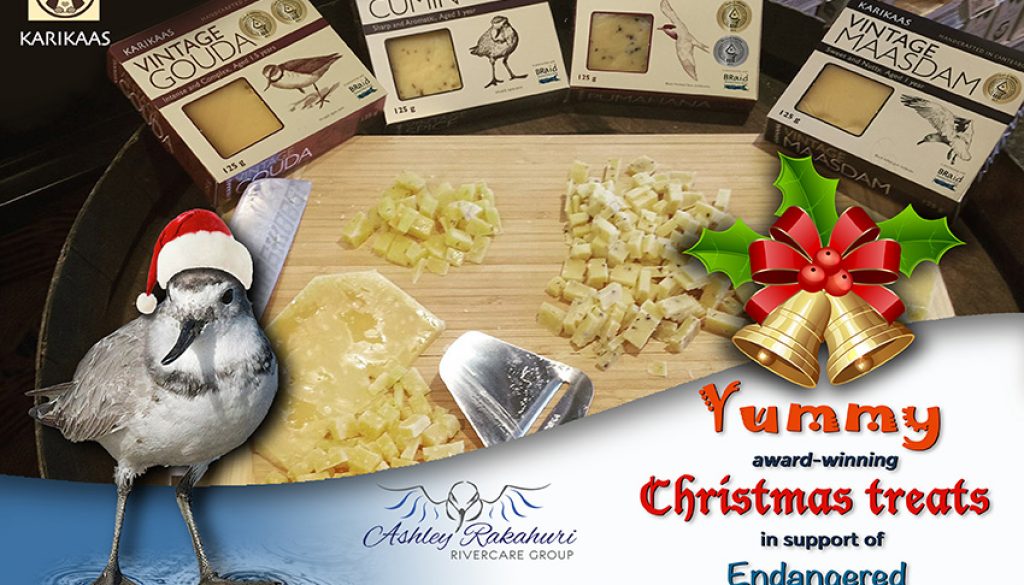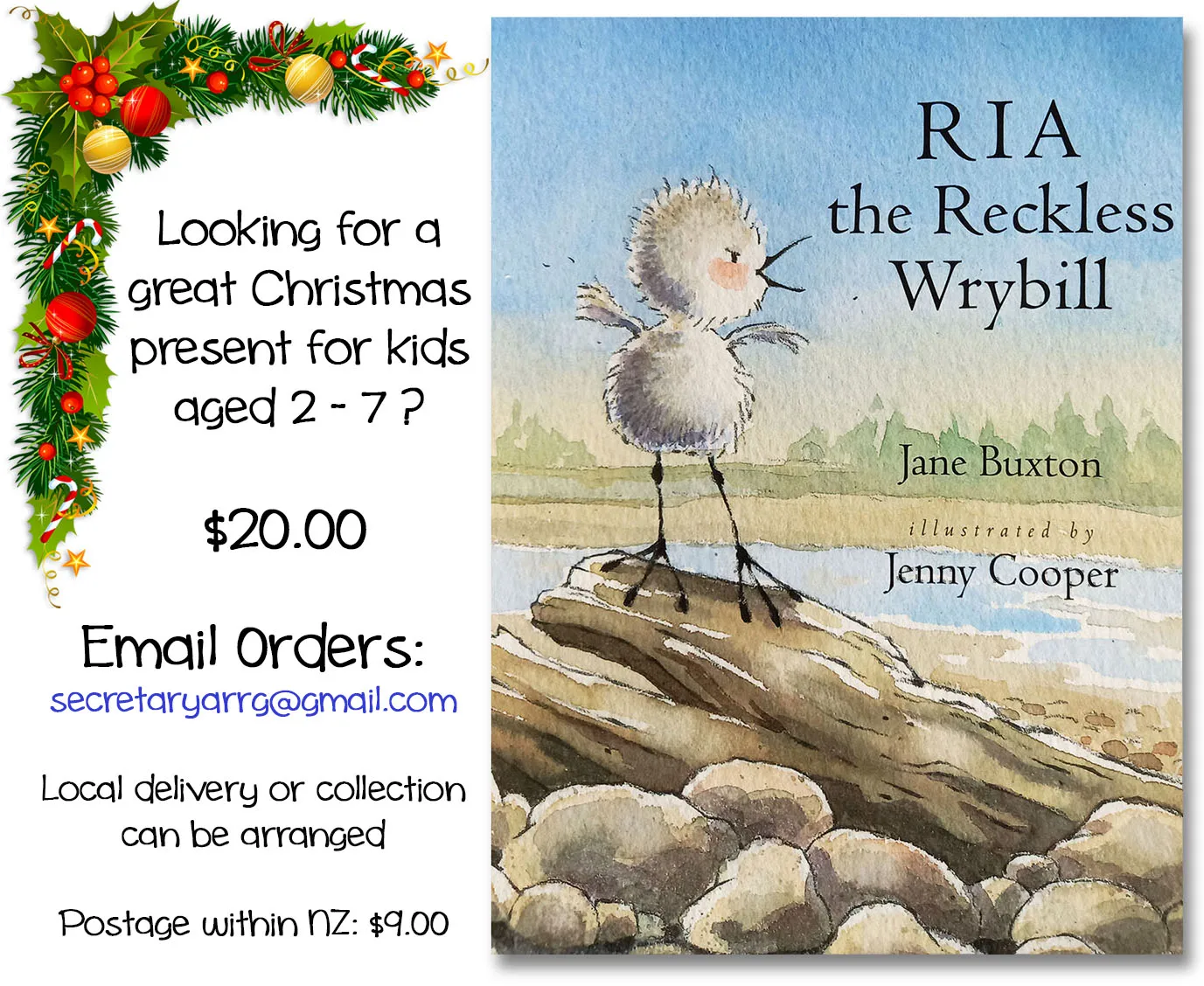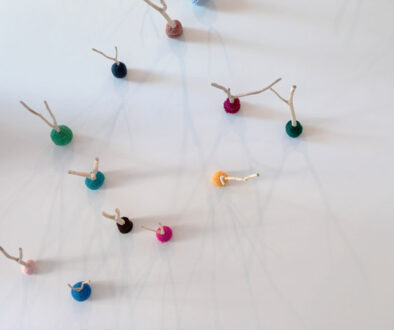Newsletter #85
In about 30 minutes, I’ll be going on leave for the next few weeks, so this will be our last newsletter of the year.
Thanks to everyone for all their amazing mahi in 2023. If you’re looking for Christmas gifts, might we suggest buying some of the amazing cheeses from Karikaas, which donates a percentage of their revenue from the Braided Rivers Bird series to the Ashley Rakahuri Rivercare Group. The group are also selling copies of the kids’ book: ‘Ria the Wreckless Wrybill’, which you can order by email.
Meri Kirihimete!
Bird Surveys
Mike Bell, who is running the National Black-billed gull census in co-ordination with, has asked me to pass on thanks to everyone who submitted information:
“We have just finished flying all the South Island rivers – we have been blessed by good weather, and got all sections done in the time slots we wanted to. Results seem pretty good – see a basic map of locations below (sorry my mapping is pretty basic). Obviously we haven’t counted the aerial photos yet, but numbers look pretty promising, and potentially similar to 2016/17.
“I’m still keen on any records, especially if people look at this map, and think a colony they know about is missing.”
Please email Mike Bell (not me!) if you can help fill in any gaps: mike@toroaconsulting.co.nz.
They are hoping to have counts completed by early next year, so stay tuned.
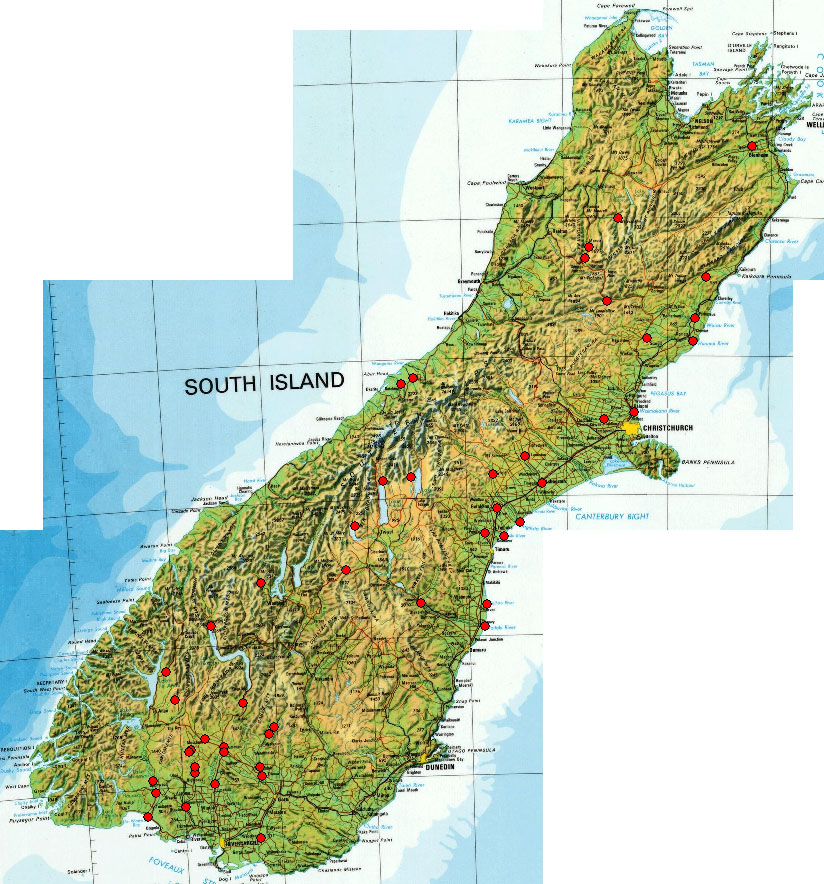
News
- NZ Landcare Trust have launched a Catchment Toolkit as a ‘resource hub, designed to empower and educate community-based catchment leaders and coordinators.’
- Our Land and Water, part of the National Science Challenge, reveals some alarming bottom lines when it comes to water quality across the motu:
“Substantial reductions of at least one contaminant are required in almost all regions. Many rivers, lakes and estuaries exceed the bottom line for more than one contaminant. This adds to the challenge, because actions to reduce one contaminant may not reduce another, so more effort, time and investment will be required to reduce multiple contaminants.”
- NIWA has developed a photarium to help safely identify, study & measure endangered native fish
- Central Plains Water was required to prove its fish screen on the Rakaia River was effective, but it didn’t – Newshub
Trapping stories
In the last few years BRaid has helped Manawa Energy with habitat creation and predator trapping at the Harper River. Ryan from Manawa Energy shared this photo of his 6 year old nephew with his first predator trap! Working from home during the COVID-19 lockdown in 2020, Ryan was able to share photos and videos of the environmental enhancement work that Manawa completes around their hydro power stations to keep his (then 3 year old) nephew entertained on long days at home.
Since starting school, Ryan’s nephew has learnt more about introduced predators and the effects they have on native bird populations. After spotting a stoat in the garden at home, which is near a DOC Forest Park, he decided he wanted to help by doing his own trapping to make sure the native birds that visit the garden will continue to do so. He now has his first rat trap to set on their rural property and hopes to add a mustelid trap as well.
He can’t wait to share the results of his trapping with his friends to inspire a new generation of trappers.
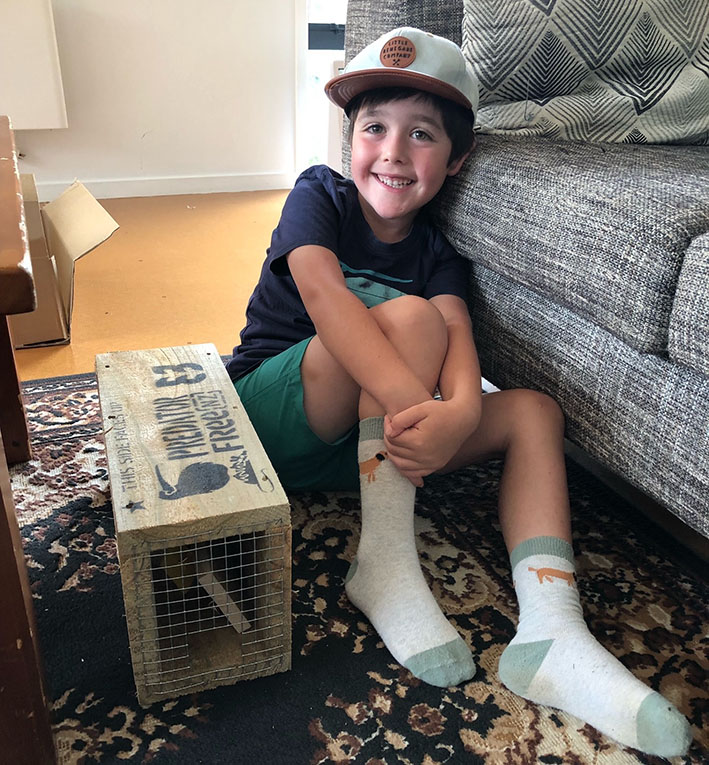
Research
- Carpenter et al; Radio collaring reveals long-distance movements of reinvading ship rats following landscape-scale control, NZ Journal of Ecology 47 (1): 3522 (Note: one of the authors, John Innes, presented ‘Norway Rats don’t come from Norway‘ at the 2023 Braided Rivers seminar)
- Murphy et al; Developing a new resetting tool for controlling rats : NZ Journal of Ecology 47 (1): 3517
- Rickett et al; Trials with non-toxic baits for stoats and feral cats; NZ Journal of Ecology 47 (1): 3505
- Nichols et al; Evaluating the effectiveness of a feral cat control operation using camera traps: NZ Journal of Ecology 47 (1): 3501
- Burge et al; LiDAR reveals drainage risks to wetlands have been under-estimated: NZ Journal of Ecology 47 (1): 3523
- Bourke et al; Determinants of hatching and recruitment success for captively reared kakī (Himantopus novaezelandiae): NZ Journal of Ecology 47 (1): 3508
- Wood; Post-settlement extinction rates for the New Zealand avifauna; NZ Journal of Ecology 47 (1): 3506
- Martin et al; Earliest known Gondwanan bird tracks: Wonthaggi Formation (Early Cretaceous), Victoria, Australia. Nov. 2023 PLOS ONE (Open access)
- The Hydrological Sciences Journal has a new online open-access proceedings journal: Proceedings of the International Association of Hydrological Sciences

